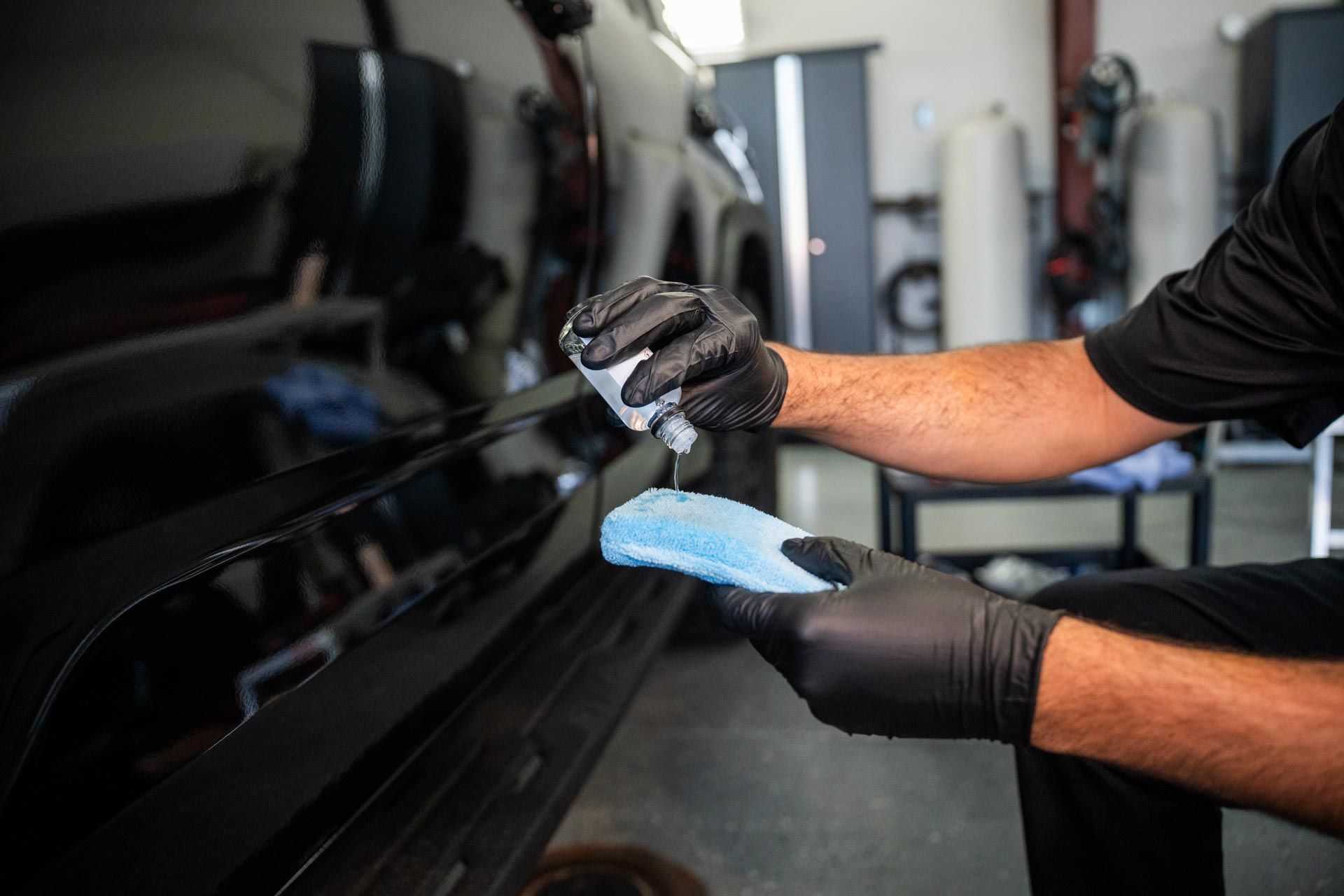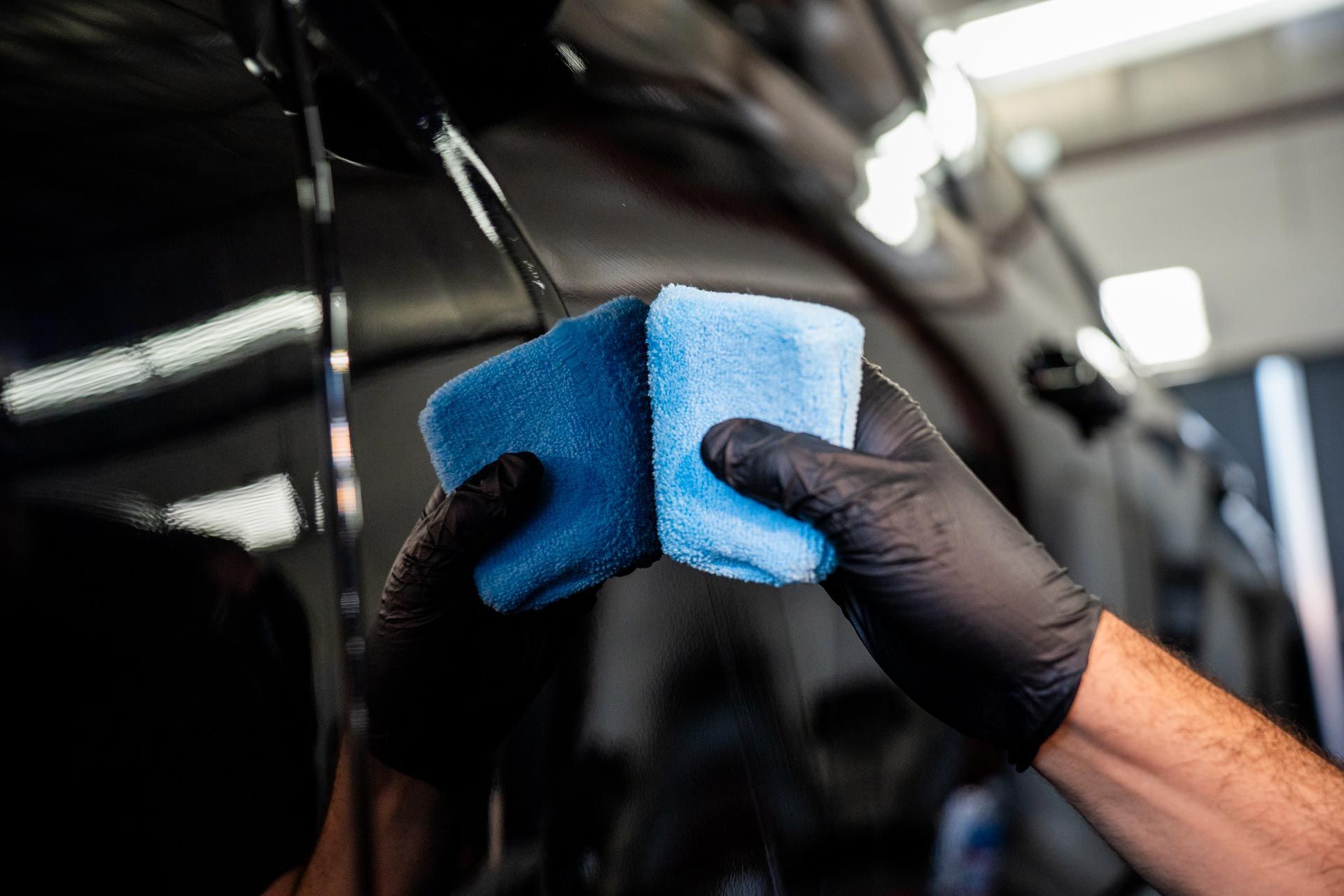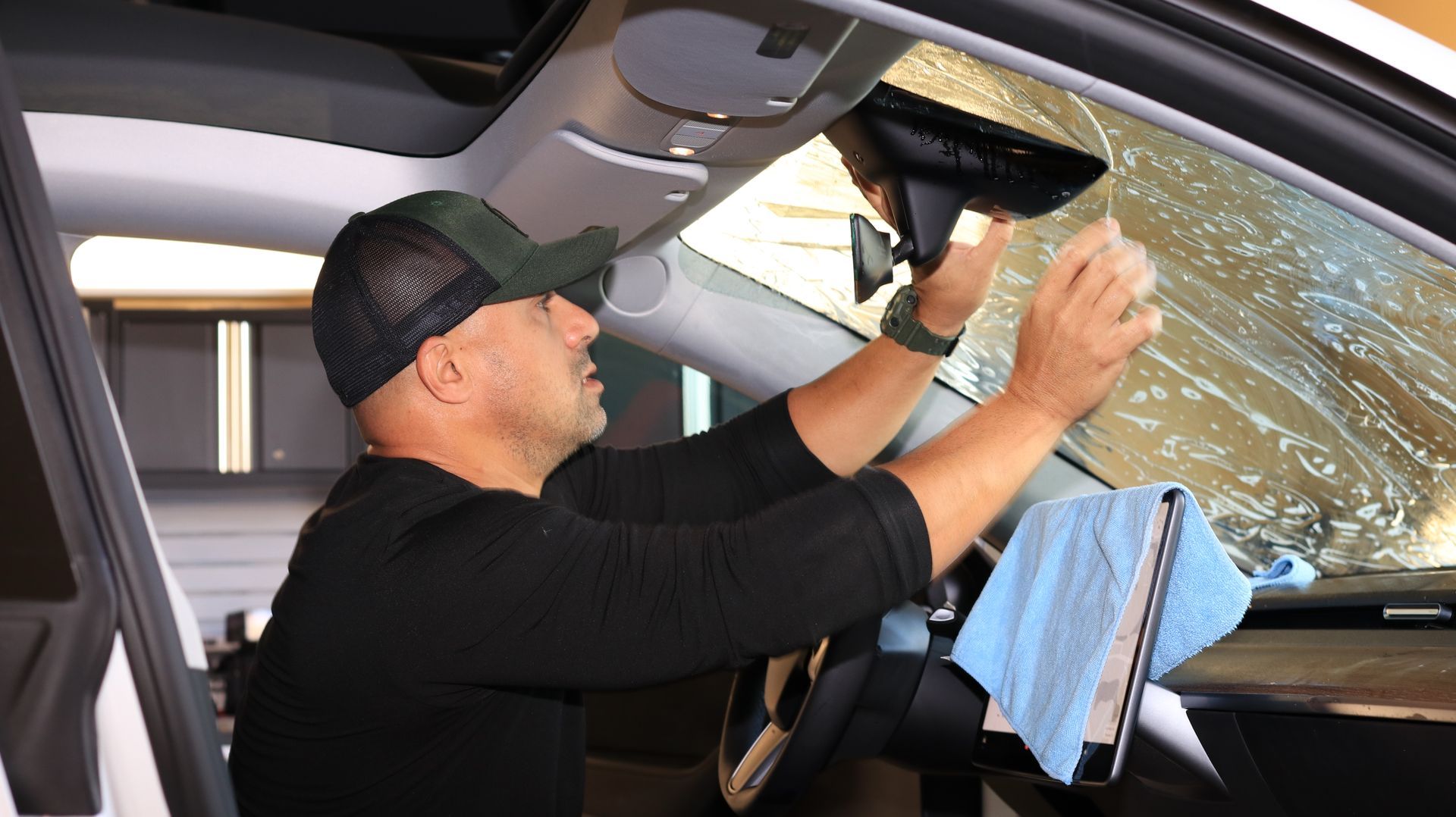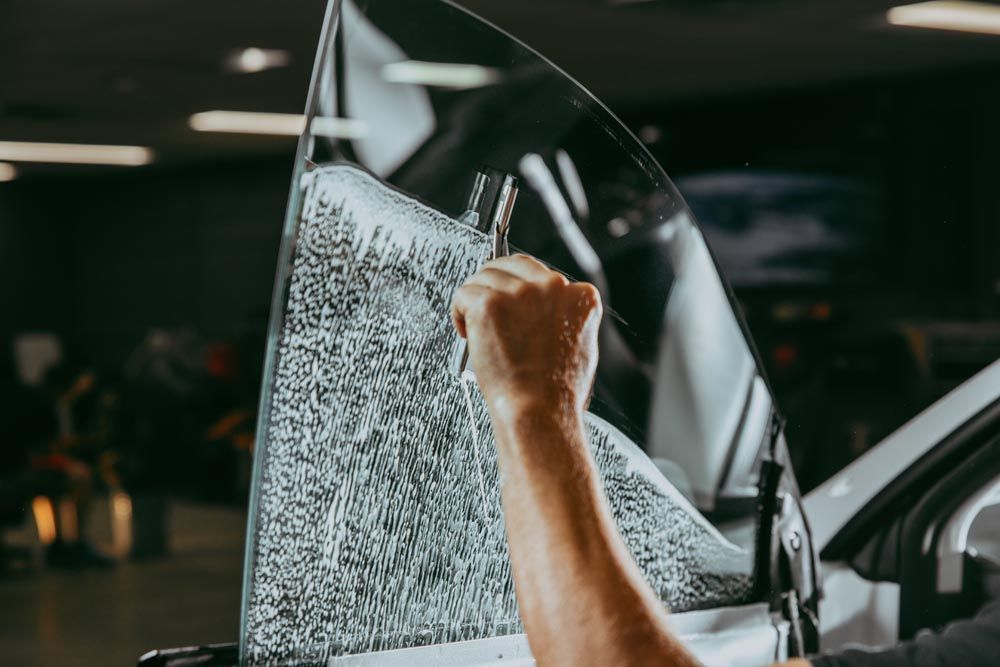The Science of Paint Protection Film: How It Works and Its Benefits
When it comes to protecting your vehicle, most people think about regular washes or a good coat of wax. However, there's a much more advanced solution available today:
Paint Protection Film (PPF). If you’ve ever cringed at the thought of chips and scratches marring your car's finish, you’re not alone. Many car owners share that anxiety.
PPF offers a transparent layer that not only protects your paint but also keeps it looking shiny and new for years. In this article, we’ll dive into how
PPF works, its benefits, and why it might just be the best investment you can make for your car’s appearance and longevity. So buckle up, as we explore the science behind this innovative technology!
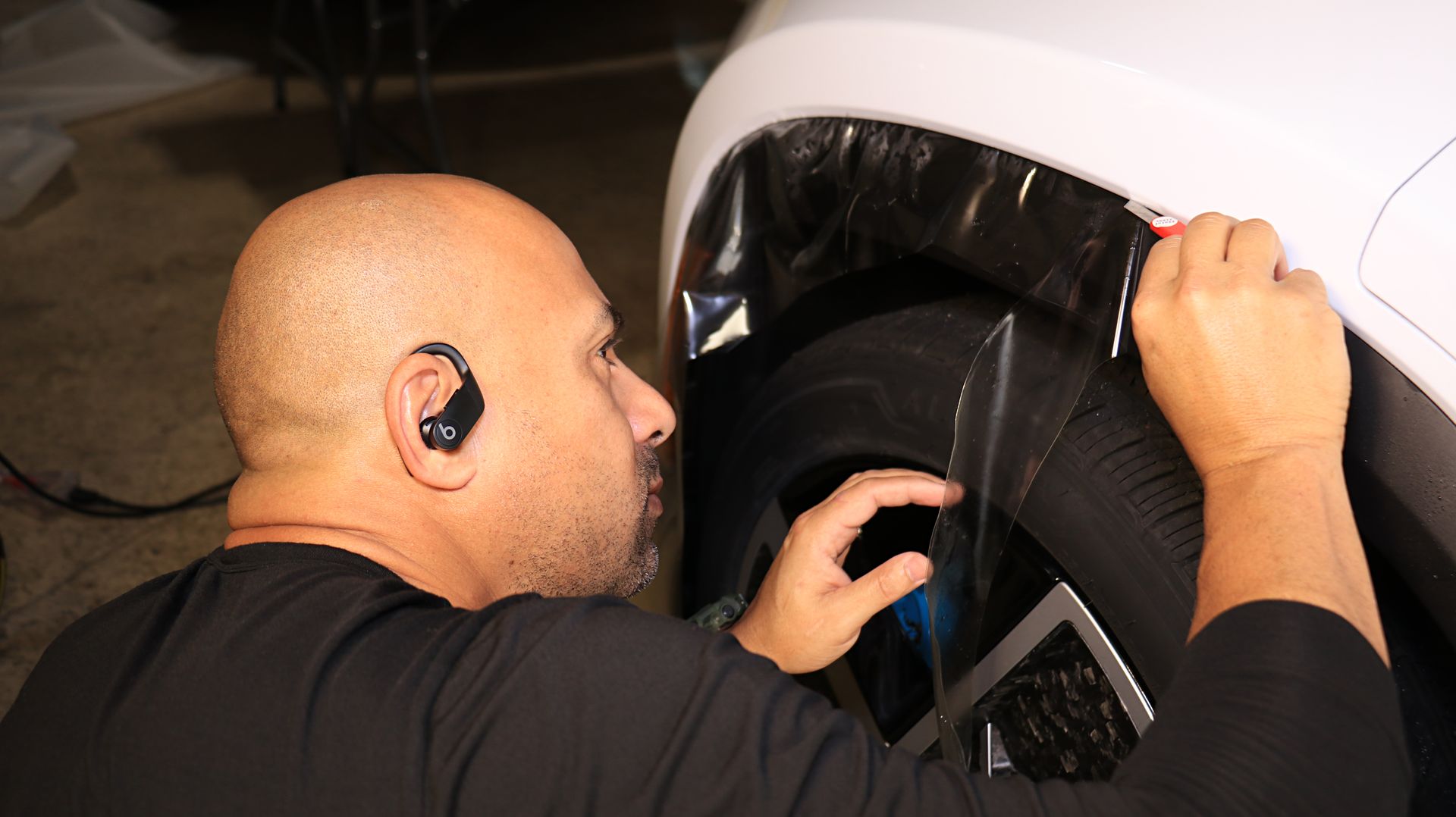
What is Paint Protection Film (PPF)?
Paint Protection Film, often referred to as PPF, serves as a transparent shield for your vehicle's exterior surfaces. Essentially, it is a specially formulated polyurethane film designed to absorb impacts from various elements that can mar your paint job. Think of it as invisible armor—protecting against everything from annoying rock chips to aggressive UV rays that threaten to fade your car’s luster over time. When you apply PPF, you're putting up a barrier between your vehicle and environmental threats.
PPF has roots in the military; originally developed to protect helicopter rotor blades during the Vietnam War, its application has since been adapted for everyday vehicles seeking enhancement in protection and appearance.
The beauty of PPF lies in its advanced properties. This film conforms beautifully to the contours of your vehicle, thanks to an adhesive backing activated by heat. It's cut precisely to fit various vehicle surface shapes, ensuring comprehensive coverage without compromising aesthetics. Many high-quality films also feature self-healing properties, allowing minor scratches to disappear when exposed to heat—a remarkable feature that maintains a flawless finish over time.
When contemplating the investment in PPF, consider this: it actively preserves the value of your vehicle. In an age where aesthetics and resale value are paramount, a well-maintained paint job can make all the difference. PPF helps retain clarity and glossiness far better than conventional waxes or sealants, providing protection without sacrificing the stunning appearance that makes your car uniquely yours.
Moreover, using PPF can significantly reduce the frequency with which you need to wash or detail your vehicle, thus extending the longevity of both the finish and underlying paintwork. For regular drivers who face rain, sleet, or snow—or even those occasional bird visits—this film provides peace of mind. Investing in Paint Protection Film is like investing in an insurance policy for your car's exterior—a small price for potentially priceless protection.
How Does Paint Protection Film Work?
At its core, PPF is engineered to absorb and disperse the impact energy from small debris or minor collisions, preserving your vehicle's original paintwork remarkably well.
The magic happens when an object strikes the film; instead of causing localized damage, the energy dissipates across the entire surface thanks to the film's inherent flexibility and elasticity. It’s like having a soft cushion that absorbs the brunt of a blow, ensuring that what lies beneath remains unharmed.
Moreover, the adhesive used in PPF acts as a sigil, forming a close-fitted bond against the vehicle without creating pesky air bubbles or wrinkles that could impede performance.
The enduring nature of PPF can be attributed to its sophisticated multi-layer construction, which plays a crucial role in its effectiveness.
Layers of PPF
- Top Coat: This outermost layer is designed to resist minor scratches and provide
hydrophobic properties
that repel water and dirt, allowing everyday grime to wash off more easily than with traditional paint alone.
- Polymer Layer: Offering great flexibility and strength, this layer allows the film to stretch and fit snugly over any contour of your vehicle without compromising on protection.
- Adhesive Layer: Serving as the backbone of installation, this layer ensures that the film adheres securely to your car's paintwork yet remains removable when needed—without leaving behind any unpleasant residue or harming the underlying surface.
These layers work together to create a formidable barrier against environmental contaminants, UV rays, and physical damage from rocks or road debris. Think of PPF as a superhero cape for your car—shielding it from harm while appearing nearly invisible to onlookers.
The self-healing properties inherent in many modern films mean that very minor scratches can literally disappear when exposed to heat, usually from things like sunlight or even warmth from washing your car.
By grasping how these protective layers function, it becomes clear why this technology is essential for safeguarding your vehicle while enhancing its longevity and aesthetics.
Unique Features and Self-Healing Technology
One standout feature of modern PPF is its exceptional resilience against stains caused by contaminants. For example, bird droppings, road salts, and even tree sap can pose serious threats to your vehicle’s pristine appearance. However, thanks to advanced formulations, these films are engineered to withstand such threats without compromising the clarity and gloss of the original paintwork.
Imagine driving your car under the searing sun for hours, only to discover that what once seemed like a daunting stain has simply vanished from the surface — that’s the miracle of contemporary PPF technology at work. This capability enhances aesthetics while relieving car owners from the anxiety of potential damage when parking under trees or near busy roads. The mental peace that comes with knowing your investment is shielded from everyday hazards is invaluable. Thus, maintaining your vehicle becomes more about enjoying the ride and less about battling nature’s elements.
Moreover, there’s an additional layer of protection: some high-end PPFs integrate antimicrobial properties into their design. These antimicrobial additives actively combat bacterial growth on the film's surface. By reducing contamination buildup over time, they provide a cleaner experience overall.
For instance, if you frequently drive or attend outdoor events, this feature helps keep the surface feeling fresh and reduces the frequency of washes needed. Think of it as giving your vehicle a health boost along with its beauty treatment! A clean car is no longer just about vanity — it's also about protecting your health and well-being.

Advantages of Using Paint Protection Film
Applying PPF enhances the durability of your car's exterior while preserving its aesthetic appeal over time. One significant benefit is chip resistance. This means that everyday threats like rocks and road debris won't leave their mark on your vehicle. Imagine driving down a gravel road or navigating a crowded parking lot—those seemingly harmless encounters can lead to unsightly chips. With PPF, you can have peace of mind knowing that your car’s paint is protected against common wear and tear.
Moreover, maintaining a vehicle often feels like a chore, but that's where the ease of cleaning with PPF comes into play. The hydrophobic properties of PPF mean that water beads up instead of forming streaks or residue on the surface. This surface tension is a game changer, making cleaning much simpler. Instead of scrubbing away at stubborn dirt or grime, washes become quicker and require minimal effort. This leads to another huge plus: reduced maintenance costs since owners spend less time removing contaminants that could otherwise harm their paint.
Let’s not overlook the impact on aesthetics. As we all know, first impressions matter, especially when it comes to vehicles. Having a car that maintains its showroom finish for longer is vital for any proud owner. PPF helps retain sheen and shine, allowing your car's true color and depth to come through without distortion or fading over time.
PPF vs. Traditional Paint Protection Methods
When you're in the market for paint protection, understanding the differences between Paint Protection Film (PPF) and traditional methods like waxes, sealants, and ceramic coatings is essential.
One of the most significant factors to consider is durability. PPF can last up to 10 years with proper care, while waxes typically offer protection for only three to six months. This longevity means fewer visits to your auto detailer and more time enjoying that pristine shine.
For most vehicle owners, this difference in longevity translates to cost-effectiveness over time. If you find yourself waxing every few months, those accumulated costs quickly add up compared to the one-time investment in PPF.
Final Thoughts
In summary, when evaluating paint protection solutions for your vehicle, it is evident that while traditional options like waxes and sealants may provide some blast against dirt and discoloration, they fall dramatically short in offering the comprehensive benefits inherent in Paint Protection Film (PPF). Protecting your car isn't just about aesthetics—it's about making a long-term investment that ensures resilience against environmental elements and daily hazards alike.
